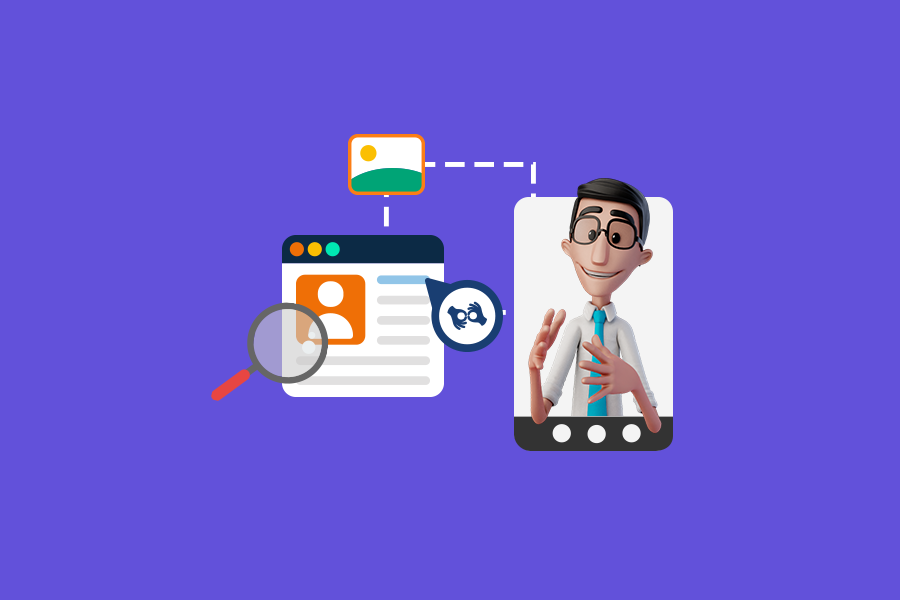
Accessibility in healthcare: how to improve access to healthcare?

The concept of accessibility is fundamental to our current society. Despite having made many achievements in improving the conditions of our physical spaces and virtual environments, there is still a significant demand for the adaptation of healthcare service facilities. In order to achieve this, all types of accessibility need to be considered.
If you want to learn more about the subject and understand everything that is crucial to making healthcare services increasingly accessible to the diversity of the population, you’re in the right place. So, let’s get straight to the point and make the most of the information!
What are the main types of accessibility?
Let’s dive into some types of accessibility that are crucial for all people with disabilities. Keep reading!
Attitudinal accessibility
Attitudinal accessibility encompasses all aspects that may involve stigmas, stereotypes, and the resulting prejudices. Referring to someone as “disabled” or treating a person with a disability as pitiful are examples of a lack of attitudinal accessibility.
Architectural disability
Architectural accessibility concerns the features that a physical space needs to have in order for people to navigate and use all the resources available. This includes ramps, elevators, tactile floors, and so on.
Methodological accessibility
When it comes to learning and teaching, we also need to consider methodological accessibility, which is adapting the way educational activities are conducted so that students with disabilities can learn. It is essential in cases of students with visual or hearing impairments, as well as those with autism spectrum disorder, for example.
Programmatic accessibility
Here, accessibility focuses on policies, norms, legislation, and regulations that ensure the needs of people with disabilities are met. In this case, the idea is to ensure that individuals can resort to legal means if an institution does not meet the accessibility requirements.
Instrumental accessibility
Instrumental accessibility encompasses anything that provides a person with a disability with a resource that helps them break down a barrier. An example of this is the availability of a screen reader software, which is used on computer screens in schools, companies, or any other location.
Transportation accessibility
Transportation accessibility is essential for individuals with reduced mobility, as it enables people with disabilities to move more easily (and independently) between locations in the city, for example. It is particularly important in public transportation.
Communication accessibility
Communication is the ability to transmit and understand a message clearly. This can occur in numerous ways beyond verbal and written communication. Sign Languages are a clear example of this, but it is also important to normalize the use of audio description, braille instructions, and the hiring of interpreters at events, for instance.
Digital accessibility
In the digital realm, accessibility is equally important since millions of users are active on the internet every day, but very few channels invest in it. To optimize websites, it is necessary to rely on assistive technologies that allow people to navigate with autonomy.
In fact, it is crucial that a healthcare website is accessible to all audiences. Therefore, the use of resources such as text readers, virtual Sign Language translators, high contrast, and alternative text is essential.
It is also important to pay attention to the Web Content Accessibility Guidelines (WCAG).
Natural accessibility
Natural accessibility is what allows a wheelchair user, for example, to reach the beach sand or access the sea. It also enables the consideration of natural spaces with alternatives for people with disabilities.
What is accessibility in healthcare?
Accessibility is the care given to include the needs of people with disabilities in all activities offered to the population. This means adapting physical spaces, virtual environments, communication models, and anything necessary for individuals to have autonomy and independence when using services, products, and information. It is important to remember that accessibility does not only benefit people with congenital disabilities, but also acquired and transient as well.
In healthcare, it is no different. Accessibility provides individuals with disabilities the possibility to independently enjoy all the resources offered to the population, without needing support or accompaniment from a person without disabilities, for example.
What is the difference between access and accessibility in healthcare?
According to a study on the subject, access to healthcare refers to the condition in which a person can enter a facility that provides such services, seeking assistance for any potential issues. This should consider the location of the service point, availability of hours, and the possibility of being attended without an appointment, for instance.
On the other hand, accessibility refers to adjusting the conditions of the resources offered so that the entire population can receive assistance without any obstacles—whether physical or communicative. This mainly includes adaptations that enable people with disabilities to enter health centers, effectively communicate their problems, and receive comprehensive care.
What factors influence accessibility to healthcare services?
Among the main examples of factors that can influence accessibility to healthcare services are:
- Reserved parking spaces;
- Barrier-free access;
- Ramps for accessibility;
- Presence of handrails;
- Availability of accessible restrooms;
- Sufficient space for movement;
- Wide corridors;
- Designated seating area in the waiting room;
- Accessibility in elevator cabins;
- Specific elevator features;
- Tactile flooring;
- Specific flooring features;
- Spacious and mobility-friendly examination rooms.
What is the role of healthcare professionals’ humanization regarding accessibility?
In the case of healthcare professionals providing care, accessibility depends on:
- Using the appropriate terms to refer to patients with disabilities, rather than using words like “disabled”;
- Respecting any physical or cognitive limitations and difficulties that patients may have;
- Attending to the requirements and specificities of each individual, not only based on their disability but on the person as a whole;
- Training and equipping the team in terms of both care and communication;
- Professional qualification to promote respect, equality, and inclusion.
How to provide care to patients with disabilities?
Providing care to patients with disabilities requires all the attention given to any patient. However, it is essential to ensure the safety and inclusion of these individuals to truly deliver satisfactory healthcare.
This demands that professionals remain attentive to the requirements and respect the fundamental rights of people with disabilities. However, this attention should not result in rigid or inflexible care from healthcare providers.
Using creativity is an excellent way to masterfully attend to this audience. Want an example? Instead of having a team member who understands American Sign Language (ASL) and translates conversations, how about training all professionals to communicate in this way?
The qualification of professionals is what will make a difference in the patient’s experience. If all team members can act naturally and flexibly towards different disabilities, interactions will become more spontaneous and comfortable. Besides, it is extremely important that the team does not have any ableist biases to attend to this public.
The types of accessibility are not bonuses for patients. They are basic rights that all patients with disabilities have and that the institution needs to fulfill. This is about inclusion, but above all, it is about respect and humanization in the relationships between healthcare professionals and patients!
Conclusion
Have you ever noticed if the medical office you visit is accessible? Do you know how many people communicate in ASL at the health center near your home? Are you aware of accessible routes for moving around the last hospital you visited?
These are questions that most people may not be able to answer, but they are constant concerns for people with disabilities when they need to access healthcare services. So why not start making the healthcare field a more accessible space? You can take the first step with the Hand Talk Plugin, an automatic translator for American Sign Language that makes your website communication accessible to the deaf community. Contact Hand Talk experts and learn more!


